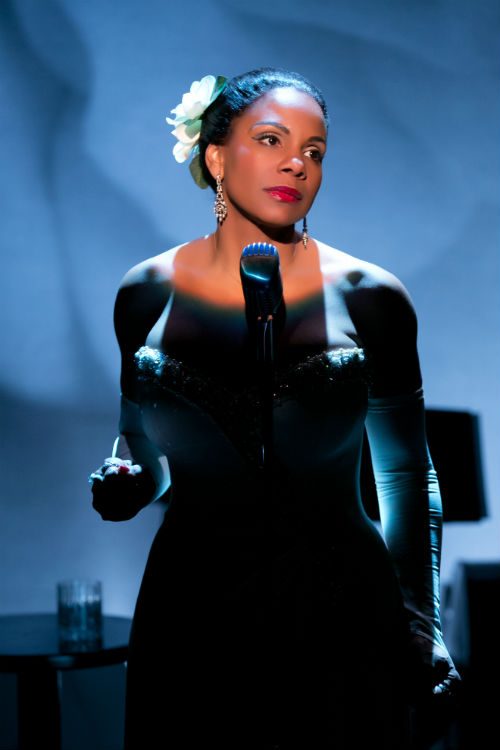Tony winner Audra McDonald shines as Billie Holiday.
The moment you set foot in the Circle in the Square Theatre for Lady Day At Emerson’s Bar & Grill you know you are in for a special evening. No effort has been spared in transforming this Broadway theatre space into a mid-century nightclub, complete with bar, dim lighting, ringside seating, and musicians onstage.
This production, which is a revival of Lanie Robertson’s 1986 play of the same name, is well timed and wins the iconic Billie Holiday an entirely new fan base thanks to the incandescent Ms. McDonald, who breathes life into the beautiful—and some would say tragic—American jazz singer.
Holiday has long held a mythical status for gays, lesbians, feminists, and anyone who cares about the cultural evolution of this country. While this play doesn’t address Holiday’s rumored bisexuality and affairs with other women (the closest it comes to the topic is Holiday’s unwavering admiration of Bessie Smith, a queer jazz heroine), Lady Day At Emerson’s Bar & Grill is still a magical night at the theater for culturally-inclined lesbians or for anyone who appreciates the sacrifices made by strong and troubled women in the performing arts.
The play, which is performed as a monologue without intermission, is thoroughly engaging, amusing, heartbreaking and breathtaking—all at once. Set in 1959, just months before Holiday died at the age of 44, this play is nevertheless filled with passion and joy. We learn of Holiday’s loves and longings; the early traumas that shaped her; and the emotional and nuanced relationship she had with her music.
This is perhaps the biggest gift of the play: learning what Holiday’s music meant to her—as stories, as memories, as an escape (“Strange Fruit” and “God Bless the Child” are traumatic for her to perform; the 1935 standard “What a Little Moonlight Can Do” is her magic carpet to a childlike state of being). Her stories unfurl as a narrative of the racism and sexism endured by black women in this country— and we learn that even Holiday’s beauty and talent did not protect her from some degrading experiences even at the height of her fame.
Both playwright and performer have crafted a warm and loving tribute; the basic conceit of Billie Holiday getting tipsy to calm her nerves and oversharing with her audience may seem a little too easy, but in bringing that patchwork of patter and its accompanying songbook to life, McDonald proves herself to be a true virtuoso: she loses herself in a labyrinth of songs, and her usual arrestingly rich soprano voice is tamed and molded to uncannily replicate the idiosyncrasies of a self-taught jazz vocalist who smoked, drank, and injected her way through a painful life. Close your eyes and Billie Holiday lives once more.
McDonald is about the same age now as Holiday when she died, and we can be thankful that today such talent does not automatically come with suffering. In this play we can celebrate the beauty and talent of two extraordinary women.
